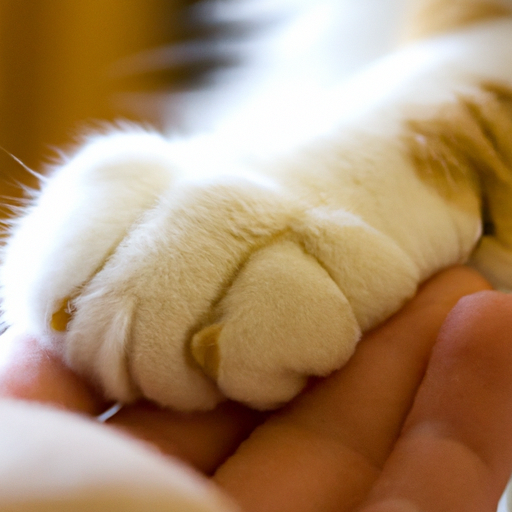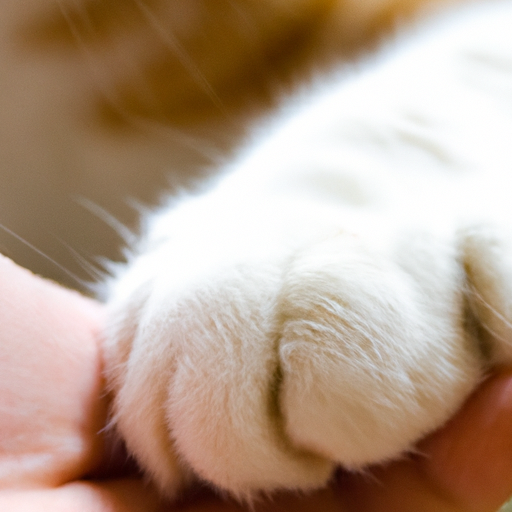Adopting A Cat: A Step-by-Step Guide To Welcoming A New Feline
So, you’re thinking about adopting a cat? That’s pawsome! Whether you’re a first-time cat parent or experienced in the feline world, this step-by-step guide will help you navigate the process of welcoming a new furry friend into your home. From choosing the perfect companion to preparing your space, and everything in between, we’ve got you covered. Get ready to embark on this exciting journey and create a loving and purrfect environment for your new feline companion!

This image is property of images.pexels.com.
Click here to Understand & Speak With Your Cat!
Choosing the Right Cat
Bringing a new cat into your home is an exciting and rewarding experience. However, before you take the plunge, it’s essential to consider a few factors to ensure you choose the right cat for your lifestyle. The first step is to evaluate your lifestyle and determine the type of cat that will thrive in your environment. Some cats, such as the energetic Abyssinian or the playful Siamese, require lots of mental and physical stimulation. On the other hand, some breeds, like the laid-back Ragdoll or the independent British Shorthair, are more suited to quiet and low-energy households.
Researching different cat breeds is another crucial step in finding the perfect feline companion. Each breed has its unique characteristics and traits, so doing your due diligence can help you find a cat that matches your expectations and preferences. Consider factors such as grooming needs, temperament, and activity levels when researching different breeds. Online resources, breed guides, and even speaking to experienced cat owners can provide valuable insights and help you make an informed decision.
Visiting animal shelters is an excellent way to find a cat in need of a loving home. Shelters are often filled with cats of all ages and breeds, each with their own delightful personality. By visiting shelters, you can meet different cats, spend time interacting with them, and find the one that resonates with you. Adopting from a shelter not only provides a cat with a second chance at life, but it also fills your home with love and gratitude. Remember, the right cat for you might not be a specific breed but rather a furry friend waiting for their forever home.
When deciding between adult cats and kittens, consider your lifestyle and preferences. Kittens are undeniably adorable, but they require more time, energy, and patience compared to adult cats. They need to be trained, require more playtime, and have a higher likelihood of destructive behavior. On the other hand, adult cats are generally more calm, settled, and independent. They are a great choice for those who prefer a more relaxed and low-maintenance pet. Ultimately, whether you choose a kitten or an adult cat, the love and companionship they bring into your life will be worth every minute.
Preparing Your Home
Once you’ve chosen the right cat for you, it’s essential to prepare your home to ensure a safe and comfortable environment for your new feline friend. Creating a safe space is the first step in setting up your home for your cat’s arrival. Designate a quiet area in your house as their sanctuary, complete with a cozy bed, blankets, and toys. This safe space will serve as their retreat when they need time alone or a place to relax without any disturbances.
Gathering essential supplies before your cat comes home is crucial to provide for their needs from day one. These supplies include items such as food and water bowls, high-quality cat food, a scratching post, toys, a comfortable cat bed, a litter box, and litter. Having these supplies ready ensures that your new cat has everything they need to settle in and feel at home.
Setting up a litter box and scratching posts is vital to encourage proper behavior and prevent any accidents in your home. Choose a litter box that is large enough for your cat to move around comfortably and consider their preferences when it comes to litter type. Place the litter box in a quiet and easily accessible area, away from their food and water bowls. It’s essential to introduce your cat to the litter box as soon as they arrive to ensure they know where to go when nature calls.
Before bringing your cat home, it’s crucial to remove any hazards that could potentially harm them. This includes securing loose cords, tucking away toxic plants, and ensuring that any small objects or dangerous substances are stored safely out of their reach. By cat-proofing your home, you create a safe environment where your feline friend can explore and play without any potential dangers.

This image is property of images.pexels.com.
Click here to Understand & Speak With Your Cat!
Introducing Your New Cat
Bringing your new cat home is an exciting moment, but it’s essential to allow them time to adjust to their new surroundings. It’s natural for cats to feel overwhelmed in new environments, so providing them with a separate room initially is a wise decision. This room should have their food, water, litter box, bed, and toys. Allowing your cat to acclimate to one room first helps them feel secure and provides a gradual transition into their new home.
Once your cat has settled into their separate room, you can begin the gradual introduction to the rest of the house. Open the door to their room a crack, allowing them to explore at their own pace. This process can take several days or weeks, depending on your cat’s comfort level. Remember to be patient and give them the freedom to explore without any forced interactions or pressures.
If you have other pets in your home, it’s crucial to supervise interactions between your new cat and your existing pets. Each pet may react differently to the new addition, so take it slow and allow them to become acquainted gradually. Use separate feeding areas and provide individual attention to each pet to prevent competition or conflicts. Positive reinforcement, treats, and praise can help create a harmonious environment and strengthen the bond between your new cat and existing pets.
Establishing a Routine
Establishing a routine is essential for the well-being of your cat. Consistency and structure provide them with a sense of security and can help prevent behavioral problems. Feeding a balanced diet is crucial for their health and longevity. Consult with your veterinarian to determine the appropriate cat food, whether wet or dry, and create a feeding schedule that fits with your lifestyle.
Fresh water should be available to your cat at all times. Cats are not naturally big water drinkers, so ensure their water bowl is clean and easily accessible. Some cats prefer running water, so investing in a cat fountain might encourage them to drink more.
Play and exercise are vital for a cat’s physical and mental well-being. Set aside dedicated playtime each day, using interactive toys that stimulate their natural hunting instincts. Cats love to chase, pounce, and bat at toys, so providing them with a variety of options can keep them entertained and engaged. Physical exercise helps maintain a healthy weight and prevents obesity-related health issues.
Regular grooming is crucial to keep your cat’s coat healthy and reduce shedding. Brushing their fur regularly not only helps remove loose hair and prevents matting but also strengthens the bond between you and your cat. Additionally, grooming sessions provide an opportunity to check for any lumps, bumps, or abnormalities that may require veterinary attention.

This image is property of images.pexels.com.
Click here to Understand & Speak With Your Cat!
Building Trust and Bonding
Building a strong bond of trust and love with your cat takes time and patience. Approaching your cat with patience and respect is crucial, especially during the initial stages of getting to know each other. Allow them to set the pace and initiate interactions. Avoid forcing physical contact or overwhelming them with attention.
Positive reinforcement is key to shaping your cat’s behavior and encouraging good habits. Rewarding your cat with treats, praise, or playtime when they display desired behaviors will strengthen the bond between you and reinforce positive actions. Conversely, avoiding punishment or negative reinforcement is important as it can damage the trust you are trying to build.
Spend quality time with your cat to deepen your connection and strengthen your bond. Engage in activities that your cat enjoys, such as interactive play, gentle petting, and even talking to them in a soothing voice. Cats are social animals that thrive on affection and companionship, so giving them your undivided attention will make them feel loved and valued.
To keep your cat mentally stimulated, provide them with interactive toys that challenge their problem-solving skills and instincts. Toys that dispense treats or require them to work for their food can keep them mentally engaged and prevent boredom. By stimulating their minds, you’ll help minimize behavioral issues caused by pent-up energy or frustration.
Litter Box Training
Litter box training is an essential aspect of cat ownership that ensures a clean and hygienic environment for both you and your cat. Choosing the right litter box is crucial to your cat’s comfort and success with using it. Consider the size, depth, and accessibility of the litter box when making your selection. Some cats prefer open-top boxes, while others feel more secure in covered boxes. Experiment with different types to see what works best for your cat.
The placement of the litter box is equally important. Choose a quiet and private location, away from loud noises and high traffic areas. Cats value their privacy when using the litter box, so avoid placing it in a busy area of the house. It’s also a good idea to have multiple litter boxes if your home is large or multi-story, to ensure your cat always has easy access to one.
To familiarize your cat with the litter box, gently show them the box and let them explore it on their own terms. Place them in the box after meals or naps, as cats usually need to relieve themselves after these activities. Praise and reward your cat when they use the litter box correctly, reinforcing the positive association with the behavior.
Regularly cleaning and maintaining the litter box is essential to your cat’s happiness and hygiene. Scoop the litter box daily to remove waste and clumps, ensuring a clean and inviting environment for your cat. Empty and replace the litter as needed to prevent odors and bacterial growth. Cats are naturally clean animals, and providing them with a well-maintained litter box promotes good litter box habits.

Click here to Understand & Speak With Your Cat!
Feeding Your Cat
Proper nutrition is vital for your cat’s overall health and well-being. Choosing high-quality cat food is essential to provide them with the necessary nutrients for optimal growth and development. Look for cat food that has real meat as the main ingredient and avoid products that contain artificial additives or fillers.
Determining the right portion size for your cat is crucial to prevent overeating or obesity. Follow the recommended feeding guidelines on the cat food packaging, adjusting the amount if your cat shows signs of being underweight or overweight. It’s important to monitor your cat’s weight and body condition regularly and consult with your veterinarian for guidance if needed.
Establishing a feeding schedule helps create structure and routine for your cat. Cats are creatures of habit and appreciate predictability. Divide their daily food intake into regular meals, spaced out throughout the day. This not only prevents overeating but also allows them to feel satisfied and helps prevent begging for food.
Regularly monitor your cat for any dietary issues or changes in appetite. Sudden weight loss, excessive thirst, or changes in litter box habits could indicate underlying health conditions and should be promptly addressed by a veterinarian. Keeping a close eye on their eating habits and behavior will help catch any potential issues before they escalate.
Veterinary Care
Ensuring your cat’s health and well-being involves regular visits to the veterinarian. Schedule a visit to the vet shortly after bringing your new cat home to establish a baseline and address any immediate health concerns. Regular check-ups help detect any potential issues early on and allow for timely interventions.
Vaccinations and preventive care are integral to keeping your cat healthy and protected against common diseases. Discuss the recommended vaccination schedule with your veterinarian and make sure your cat receives all necessary vaccinations. Additionally, preventive care, such as flea and tick control and routine deworming, helps prevent infestations and protect against parasites.
Spaying or neutering your cat is an important step in responsible pet ownership. Not only does it help control the cat population, but it also provides health benefits such as reducing the risk of certain diseases and behavioral problems. Consult with your veterinarian to determine the appropriate time for spaying or neutering your cat.
Regular health check-ups are crucial to monitor your cat’s overall health and catch any potential issues early. Your veterinarian will conduct a thorough examination, check vital signs, and perform necessary diagnostic tests. They will also provide guidance on dental care, grooming, and any specific health needs your cat may have.

Click here to Understand & Speak With Your Cat!
Keeping Your Cat Happy and Healthy
Keeping your cat happy and healthy involves more than just meeting their basic needs. Providing mental stimulation is essential to prevent boredom and encourage a healthy mental state. Introduce puzzle toys or treat-dispensing toys to keep your cat engaged and mentally sharp. Rotate toys regularly to keep them exciting and novel for your cat.
Regular exercise is crucial for a cat’s physical health and mental well-being. Engage in interactive play sessions that involve chasing toys, feather wands, or laser pointers. Additionally, providing vertical spaces, such as cat trees or shelves, allows your cat to climb and explore their environment, providing necessary exercise and stimulation.
Monitoring for signs of illness is an important part of cat ownership. Cats are masters at hiding signs of illness, so it’s important to be observant and take note of any changes in behavior, appetite, litter box habits, or physical appearance. Regularly check your cat for any physical abnormalities such as lumps, bumps, or changes in fur condition. If you notice anything concerning, contact your veterinarian for guidance.
Cat-proofing your home is crucial to ensure your cat’s safety and well-being. Remove toxic houseplants, secure loose cords, and safely store any potentially harmful substances such as cleaning products or medications. Keep windows and balcony doors securely closed or install suitable screens to prevent falls. By creating a safe environment, you’ll have peace of mind knowing that your cat can explore and play without any dangers.
Dealing with Behavioral Issues
Understanding cat behavior is key to addressing and resolving any behavioral issues that may arise. Cats use various forms of communication, both vocal and non-vocal, to convey their feelings, needs, and desires. Taking the time to learn and understand their body language, vocalizations, and mannerisms will help you address any behavioral problems effectively.
One common behavioral issue is litter box problems. If your cat consistently avoids or eliminates outside the litter box, it’s essential to identify the underlying cause. Potential reasons could include a dirty litter box, stress, medical conditions, or a preference for a specific type of litter. Addressing these issues promptly, by providing a clean litter box and identifying and addressing the underlying cause, can help resolve litter box problems.
Handling aggression or fear in your cat requires patience and understanding. Aggression can stem from fear, anxiety, or territoriality, and it’s important to approach the issue gently. Seek professional help if necessary to address and manage aggression safely and effectively. Fearful cats require slow and gradual desensitization, allowing them to build confidence at their own pace. Providing a calm and secure environment is key to helping fearful cats overcome their anxieties.
If you’re unable to resolve behavioral issues on your own, seeking professional help is a wise decision. A qualified animal behaviorist or a certified cat behavior consultant can assess the situation, provide guidance, and develop a tailored behavior modification plan. They will take into account your individual cat’s needs and help you address the root causes of the behavioral problems.
Bringing a new cat into your home is a lifelong commitment filled with love, joy, and companionship. Following these step-by-step guidelines will help ensure a smooth transition and a harmonious relationship between you and your new feline friend. Remember, patience, understanding, and a whole lot of love will strengthen the bond between you and your cat, creating a lifetime of cherished memories together.









